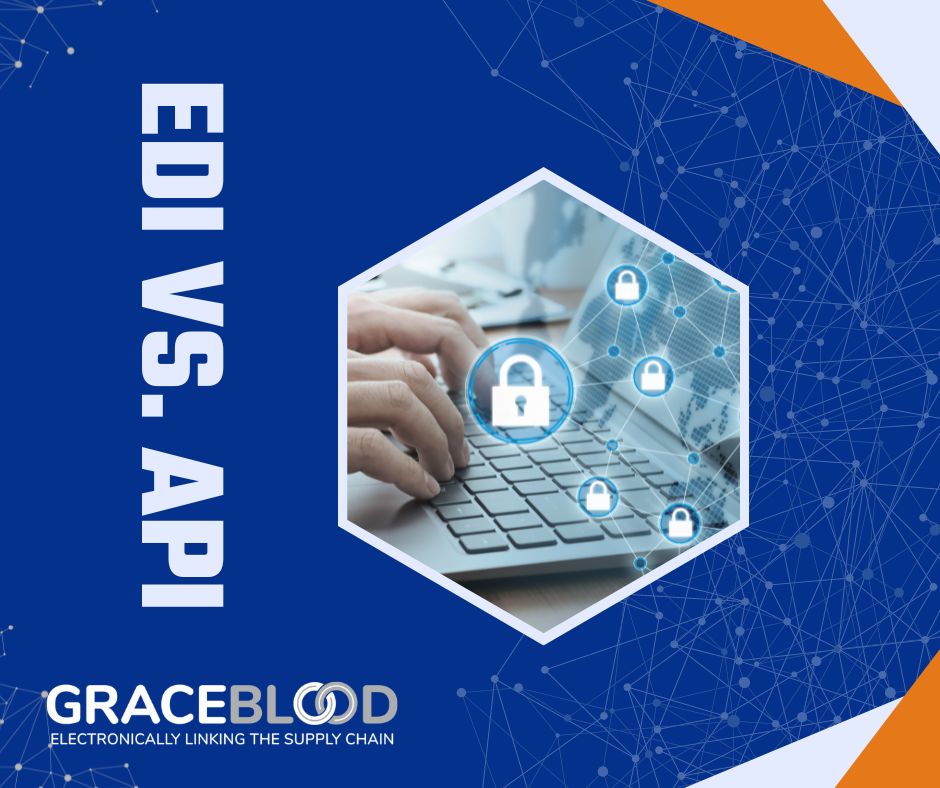Updated July 7, 2023
 Third-party logistics (3PL), or the practice of moving logistics and supply chain management from in-house to a third-party provider, has become the new normal for many businesses of all shapes and sizes in the post-pandemic economy—providing better opportunities to grow and find more efficient ways to deliver their products.
Third-party logistics (3PL), or the practice of moving logistics and supply chain management from in-house to a third-party provider, has become the new normal for many businesses of all shapes and sizes in the post-pandemic economy—providing better opportunities to grow and find more efficient ways to deliver their products.
Like outsourcing EDI to a cloud EDI services provider, outsourcing logistics considerations to a skilled and flexible 3PL provider takes work off your plate that is better spent on your core business competencies. But 3PL and EDI aren’t just alike. They’re inseparable—having a great EDI solution is the key to maximizing 3PL and achieving operational excellence.
Why Businesses Are Turning to 3PL
Many companies are moving toward having 3PL warehouses manage their inventory and order fulfillment processes and provide value-added services—if they aren’t already. 3PL vendors enable these companies to reduce their space requirements and become more streamlined.
Larger and robust 3PL companies, such as Expeditors International, Ingram Micro Logistics, UPS Supply Chain Solutions, and more, are helping businesses streamline and optimize their supply chain management operations, from transportation and inventory management and freight forwarding to customs brokerage, packaging, and reverse logistics.
How 3PL and EDI Documents Work
Today, companies’ systems are tightly integrated with the 3PLs to support sales and ship orders, shipment advice confirmations, supplier POs, receipt of goods, and RMA (return authorizations) to support warranty returns, inventory adjustments, synchronizations, and more.
Often these transactions are done in XML with web services, other times with traditional X12 or EDIFACT EDI, and even the transfer of spreadsheets and .csv comma delimited text files. Moreover, international transactions take on added complexity with VAT (value-added taxes) and additional data required.
Keeping a competitive edge with a 3PL on your side doesn’t happen overnight, though. The EDI standards we all know and love, regardless of which specific format is employed, are the bridge that makes everything happen. The suppliers know their business well, and the 3PLs are masters at what they do—but it is the EDI process that acts as the master communicator, allowing them to tango together in perfect rhythm.
A Deep Dive Into 3PL and EDI Transactions
3PL communications can be via traditional VAN or AS2, or more freeform FTP. Outside of the common 3PL EDI 940 Warehouse Shipping Order, EDI 945 Warehouse Shipping Advice, and EDI 856 Advance Ship Notice, there are documents such as the EDI 214 Transportation Carrier Shipment Status, EDI 300 series ocean container, EDI 100 series air or EDI 400 series rail related documents as well.
A few examples of the things you can do with 3PL EDI integration include:
- Mapping inbound freight invoices right into A/P to automate data entry using in-house EDI software like OpenText’s Delta/ECS, saving hours of manual labor keying in large numbers of detailed invoices.
- Allowing the freight amounts to be posted to the customers’ order invoice for B2C shipping.
- Configuring EDI 214 shipment status reports to post on your website or to be made available to inquiring customers.
- Using EDI software with web service capability to make an API call to a carrier and find a shipment’s exact location and status at any point along the supply chain.
Merging 3PL with EDI transactions unlocks many opportunities for your business to streamline its operations, drive profit, and find new avenues for expansion along the supply chain.
Nine Questions to Ask a Potential 3PL Vendor
Like choosing an EDI managed service provider, choosing a 3PL vendor is crucial. From the costs of their services to the impact of the data flow to and from your existing systems and out to your customers, you have to think about how a prospective vendor will fit in with your business operations to provide a flexible solution that fits your company like a glove, instead of an out-of-the-box solution that puts you in a box.
Before committing to a contract, you must ensure that the functionality you seek to automate your processes is operationally, economically, and technically feasible. Also, evaluate a few alternatives so you can compare different 3PLs to each other. Don’t choose the least expensive option just because it’s cheaper, but rather based on your comparison of features and your priorities.
Ask these nine questions to ensure you’re choosing the right 3PL vendor for you:
1. How long has the 3PL been in business?
The longer they have been in business, the more experience they will have to support your order fulfillment and EDI functionality.
2. Will they allow you to tour their facility?
Tours can be a valuable way of watching the facility in action to see if any improvements are required before forming a partnership with this 3PL.
3. How are their support personnel to work with?
What are their support hours? Will you have a dedicated customer service rep, or will you need to call a call center?
4. Do they have any client references that you could speak with?
Interviewing current clientele will allow you to discuss their relationship with the 3PL and get an idea of how effective they are.
5. What customers have they worked with before regarding shipping container requirements for GS1-128 labels (formerly UCC-128)?
Ask if they can easily accommodate your customer label requirements as the orders are shipped directly to your trading partner community. If so, that’s one less thing you need to maintain.
6. Are they an EDI-capable 3PL vendor, and to what extent?
Not all 3PLs utilize the standard EDI 940 Warehouse Shipping Order and send EDI shipping information to their clients. Some 3PLs, for example, use customized versions of an EDI Purchase Order 850 and EDI ASN 856 to handle their receipt of orders for shipment and shipping information and 861 Inventory Adjustment transactions to handle inventory adjustments as required.
In these cases, limited EDI capabilities often lead to designing and programming customized interfaces to a client’s ERP system. Creating a customized interface can be costly if not adequately investigated, planned, and estimated to meet the requirements of older generation 3PLs.
The two essential questions you need your potential vendor to answer to demonstrate their expertise in EDI-capable 3PL are:
- What EDI transactions do they support?
- Can they send shipping data directly to your trading partner community through customer ASNs (EDI 856)?
7. Do they utilize a VAN or FTP, or are they AS2 capable?
Some 3PLs are more advanced than others and can support some of the newer communication protocols, while others may be limited to FTP functionality.
8. What accommodations do they have for the frequency of data transmissions?
3PLs need to be able to process orders and provide shipment data on a timely basis so that customer ASNs can be built from shipment data and quickly be sent to the trading partner community.
9. Do they have a test system to test transactions prior to implementation and maintenance going forward?
Using a test system vs. a production system allows transactions to be tested without impacting the process flow in the production environment.
While 3PLs offer a wide variety of services and have varying capabilities, evaluate them very carefully so that all of your company’s business requirements will be met, and keep in mind the additional costs of going in this direction and handling the data flow.
When you ask these questions, you can be certain whether or not the vendor you’re looking for is capable of meeting the standards you need to make the most of 3PL EDI integration.
Contact us to learn more, or visit our Resources to see how some of our clients leverage B2B integration.








